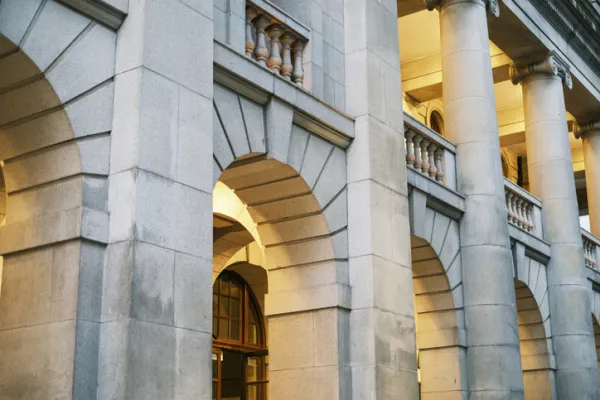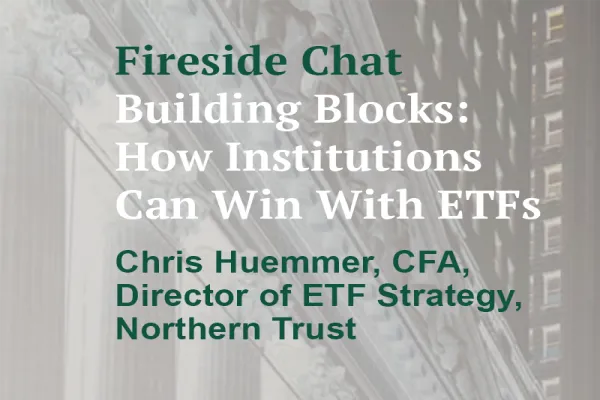A rebound in commodities prices and signs of a global recovery have renewed confidence in emerging-markets economies and revived investment flows to their equity markets. But some money managers say the most lucrative emerging-markets prospects may lie in the detritus of the credit crunch: the debt of distressed companies in these developing economies.
Distressed debt is a staple of recession-era investing. Long-term investors with patience and restructuring experience can snap up bonds or loans of troubled companies at deep discounts and negotiate new financial terms that ensure strong returns, and often get the companies back on their feet. Most money managers have tended to stick to the U.S. and other developed Western markets, where the legal protections afforded to creditors are well established.
Emerging-markets specialists insist that the potential gains outweigh the risks in their domain, however, and several firms have recently launched funds to capitalize on the situation.
“As someone who’s been doing distressed debt in Asia for many years, there have been only two times with great investment opportunities — 1997 to 1998, and now,” asserts Robert Appleby, co-founder and chief investment officer of Asia Debt Management Hong Kong, which manages $2.2 billion in distressed debt. “Today is better by a long shot. The underlying business of the companies is much better.” In August, ADM launched a new fund, Galleus Fund II, to focus on the strategy.
Other investors share that optimism. The opportunity in emerging-markets distressed debt is “unprecedented,” says Robert Rauch, director of research at Gramercy, a $2.3 billion Greenwich, Connecticut–based firm founded in the wake of the Russian debt crisis in 1998. In April, Gramercy launched the Gramercy Distressed Opportunity Fund, which now has $200 million in assets.
Also in April, Ashmore Investment Management, a London-based emerging-markets specialist, launched a new fund in partnership with Swiss bank UBS. Modeled on the Russian Consolidation and Recovery Fund that Ashmore created after that country’s 1998 debt crisis, the Ashmore Global Consolidation and Recovery Fund is designed to take distressed assets from banks, insurance companies and other financial firms in exchange for units in the fund. Ashmore, with its experience in restructurings and special situations, will manage the fund to maximize recovery values.
“The objective is to work with banks and other institutional investors to help them solve the problem of getting illiquid assets off the balance sheet,” explains Jerome Booth, head of research for Ashmore. “We’re looking for investors who would prefer us to manage the assets.”
The amount of distressed debt — generally considered to be debt yielding at least 10 percentage points over comparable Treasuries, or about 13.5 percent or more currently — is relatively modest in emerging markets. ADM and Gramercy estimate the eligible pool to be $250 billion to $300 billion, primarily in corporate debt, or roughly half the size of the market during the Asian financial crisis.
In the U.S. some $32 billion worth of corporate debt is trading at or below 50 cents on the dollar, according to analysts at JPMorgan Chase & Co., but the quantity of distressed U.S. mortgage assets is far larger. Bruce Richards, co-founder of Marathon Asset Management, recently put the value of eligible assets for the Public Private Investment Program, which covers the securitized market for residential and commercial mortgages, at $2.5 trillion to $3 trillion.
The playing field may be smaller in emerging markets, but the potential rewards are outsize, money managers say. Bonds have traded with yields to maturity of 25 to 35 percent “without being candidates for default,” notes Rauch.
Gramercy has already profited from a rally in what Rauch calls “distressed performing” bonds. In April the firm bought the 9.5 percent senior unsecured bonds due in July 2018 from Indian mining company Vedanta Resources when they were trading at less than 70 cents on the dollar. In August, the firm sold the bonds when they rebounded to its target price of 90 cents.
Also in April, Gramercy began buying the 4.75 percent senior unsecured notes due in May 2014 of Mexican cement company Cemex. Fears that the company would be unable to refinance $15 billion in debt taken on for its 2007 acquisition of Australia’s Rinker Group had depressed the bond’s price to the low 50s, where they yielded about 21 percent. Cemex reached an agreement with creditors in August to extend maturities on that debt, and Gramercy sold its bonds the following month when they were trading at 82.50.
Gramercy anticipates a surge in emerging-markets bond defaults through 2010. Some $210 billion in corporate bonds is due to mature in 2009, with a similar amount in 2010. With banks continuing to pull back on lending, all but the “bluest of blue chips” will face problems refinancing their debt, says Rauch. He expects to be able to pick up senior debt instruments at 15 to 25 cents on the dollar, with ultimate recoveries expected in the 50-to-75-cent range.
Gramercy takes a proactive approach to reorganizations, typically as the head of an organized creditor committee. “We try to get a new piece of debt with extended maturity and limits on the company’s ability to get cash out until we’re paid off,” explains Rauch.
In September 2008 the firm began buying the 10.5 percent senior unsecured bonds due in 2017 issued by Corporación Durango, a Mexican paper and packaging company, at about 15 cents on the dollar. The company filed for bankruptcy the following month. Gramercy headed up the creditors’ committee and struck a deal in April to restructure the debt, giving bondholders a small amount of cash, a 6 percent equity stake in the company and new bonds due in 2016 that pay an interest rate rising from 6 percent initially to 10 percent in later years. Gramercy expects that the deal will ultimately be worth 45 to 50 cents on the dollar, yielding at least a threefold return on its original investment. Durango emerged from bankruptcy in August with its debt load cut by more than half, to $250 million.
Gramercy has targeted gross compound annual returns of 40 percent over the next five years for its new fund. The firm’s initial foray into distressed emerging-markets debt, the $780 million Gramercy Emerging Markets Fund, generated gross annual returns of 34.6 percent in the three years following its April 1999 inception. “We think the current environment offers even greater potential than what we saw in that earlier period,” asserts Rauch. He cautions, however, that today’s rich returns are not likely to last long as the global economy recovers: “It’ll be a short-lived opportunity — maybe two to three years,” he says.
ADM takes a similar approach to corporate restructurings in Asia. The firm invests in distressed, undervalued or event-driven opportunities and generally seeks to buy out existing creditors and take an active role in restructurings. ”We try not to buy other people’s cooking,” says Appleby. ADM does not look to operate its target companies and often leaves management in place. The goal is to recycle capital as quickly as possible.
In August 2008, ADM helped refinance Yingli Green Energy Holding Co., a Chinese maker of solar energy cells, with a $150 million senior secured loan. Two years ago such loans typically carried 8 percent coupons, and debt-to-cash-flow coverage ratios were 5 to 6 times. But when Yingli was looking to refinance, banks were not lending and the public bond markets were virtually shut. ADM provided the company with a new loan carrying a coupon of 20 percent and giving the company a coverage ratio of just 2.3 times. That produced a leverage-adjusted yield (coupon divided by coverage ratio) of 8.7 percent. “I’ve never seen that in my life,” asserts Appleby. The company paid the loan back in January 2009.
In April, ADM offered a fresh $50 million senior secured loan to Yingli at an interest rate of 12 percent; ADM also obtained 4.1 million warrants to buy the company’s shares at a price of $5.64. In June, Yingli raised close to $203 million in a share offering and used the proceeds to retire debt, including ADM’s $50 million loan. The fund manager retains the warrants, which are well in the money, with Yingli’s New York Stock Exchange–listed shares trading at $13.76 last month. “China is littered with these kinds of opportunities,” says Appleby. “It is extraordinarily exciting.” ADM is also looking to strike similar refinancing deals in India, he adds.
The firm’s flagship hedge fund, Galleus — named after a type of shark found in tropical waters — has provided net returns of 11 percent annually since its inception in April 1999. Last year it posted a 13 percent decline, but over the next three to five years, Appleby expects the fund to generate net annual returns of 15 to 20 percent.
Ashmore Investment Management, which manages $24.9 billion in assets, is taking a different tack by marketing its Global Consolidation and Recovery fund as a vehicle for financial firms to get illiquid assets off their books. The fund, which was seeded with $100 million in assets from UBS, is currently invested primarily in tradable loans, private loans and convertible bonds from companies in Eastern Europe and Asia. Project financings and public and private equity are also expected to be part of the portfolio. “We consider this a multiasset class fund,” notes Booth.
Ashmore typically does not get involved in the day-to-day management of the companies it invests in, but rather seeks to add value by working with local partners to consolidate assets and restructure target companies. The opportunities in emerging markets are more attractive than in developed markets because companies there are not as leveraged, says Booth. “There is much more underlying strength and value,” he explains.
Booth expects the fund to generate returns similar to those of other Ashmore special-situation funds. Its Asian Opportunities Fund, which was created after the Asian financial crisis, generated gross annualized returns of 23.2 percent from July 2000 through December 2005, when it was wound down. Its Asian Recovery Fund, which is still open, returned 17.3 percent from its May 1998 inception through March 2009. The new fund has a five-year lockup period.
Managers of distressed-debt funds acknowledge the risks of investing in emerging markets. Although bankruptcy laws in some jurisdictions, such as Hong Kong and India, are similar to those in the U.S., countries like Indonesia and Russia do not offer good legal protection to creditors. China has passed new bankruptcy laws comparable to those in the U.S., but there is still substantial uncertainty about how the system will work in practice. “The rules are on the books, but the courts are untested,” Rauch points out.
Gramercy learned a lesson about legal pitfalls with its investment in Asia Pulp and Paper, an Indonesian company that defaulted on $14 billion of debt in 2001. Although Indonesian and U.S. courts ruled in favor of creditors, Gramercy ended up having to reach a private deal with an Indonesian individual to resolve its claims against the company. “If you have to do a corporate reorganization in emerging markets, it’s highly likely you’re going to want to do it out of court,” Rauch notes. He declines to disclose the details of the Asia Pulp and Paper settlement, saying only that “it was a reasonable recovery.” Investors also need to consider other factors when assessing potential investments, including the integrity and objectives of the owners of the business, fund managers say. The key to success is building long-term relationships and gaining knowledge of local players. “Our approach has been to choose strong partners,” says Ashmore’s Booth.
In light of the risks inherent in emerging markets, many American fund managers are more than content to stay at home and concentrate on the ample supply of distressed debt available in the U.S. “We like the law here and the opportunities here,” explains Mark Patterson, chairman of MatlinPatterson Global Advisers, a private equity firm in New York City that specializes in distressed situations and manages more than $9 billion. “The facts of this cycle overwhelmingly favor the U.S. and developed markets on a risk-reward basis.”
Such views are music to the ears of emerging-markets specialists, though. In the U.S., distressed investors are “tripping all over each other,” says Rauch. By contrast, there is much less competition for distressed assets in emerging markets. “That’s what gives rise to the potential for outsize risk-adjusted returns,” he notes.






